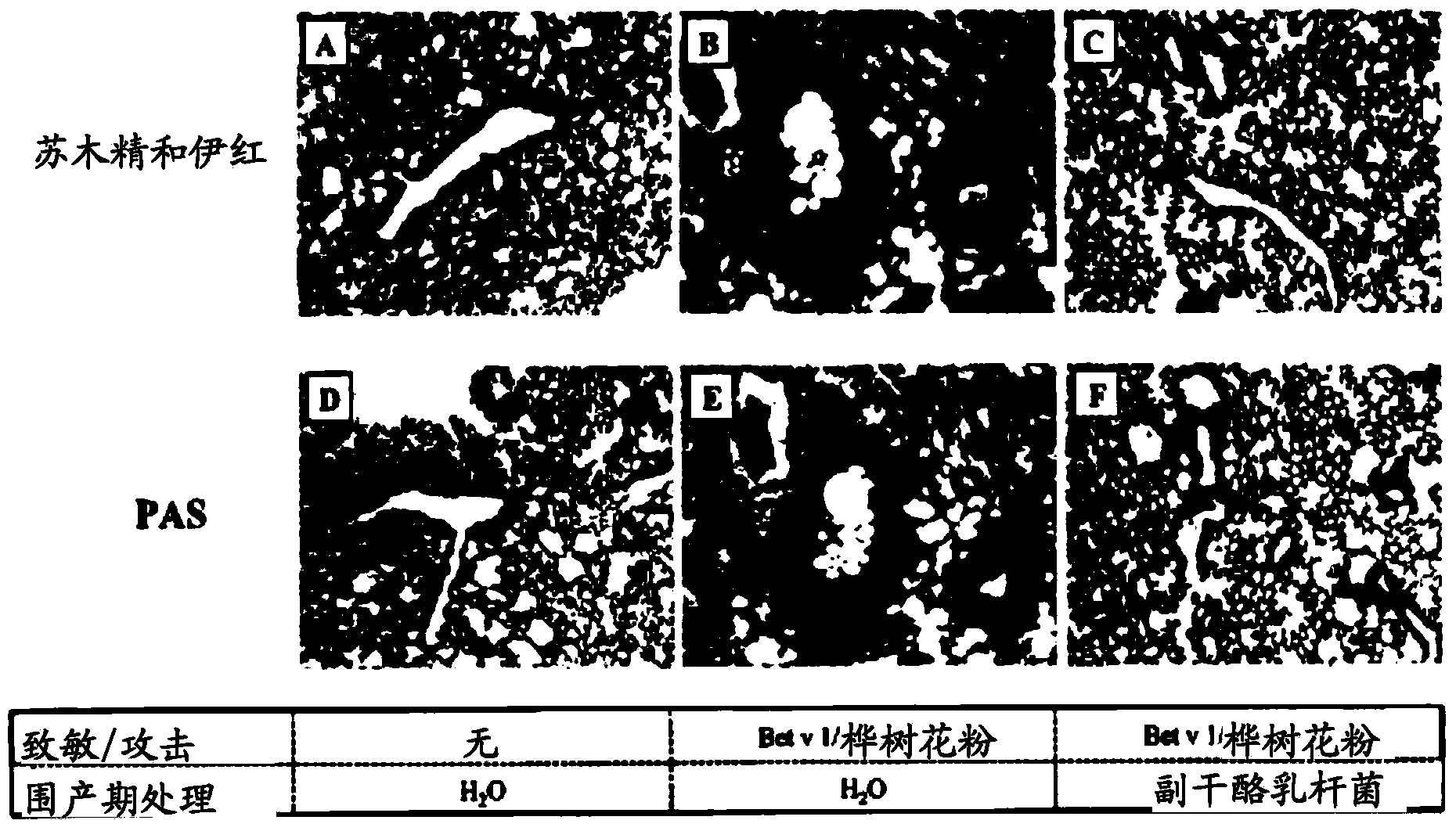Lactobacillus paracasei NCC2461 (ST11) for use by perinatal maternal administration in the reduction and prevention of allergies in progeny
A paracheese, Lactobacillus technology, applied in the directions of Lactobacillus, bacteria used in food preparation, allergic diseases, etc., can solve the problem of probiotic treatment not producing predictable results, etc.
- Summary
- Abstract
- Description
- Claims
- Application Information
AI Technical Summary
Problems solved by technology
Method used
Image
Examples
Embodiment 1
[0117] Using a mouse model of birch pollen allergy suggests that maternal supplementation with ST11 will protect offspring from an allergic phenotype.
[0118] BALB / c mice received ST11-containing drinking water daily during the last week of gestation and during lactation. Pregnant and lactating female mouse mothers were fed daily with drinking water containing live probiotic strain ST11. Offspring of ST11-treated or sham-treated dams were sensitized with the recombinant major birch pollen allergen Bet v1 and challenged with birch pollen extract ( figure 1 experimental design).
[0119] animal:
[0120] Pregnant BALB / c mice (gestation day 14) were purchased from Charles River (Sulzfeld, Germany) and maintained under conventional housing conditions. Female TLR2- and TLR4-deficient and wild-type mice with a C57BL / 6 genetic background were obtained from the University of Veterinary Medicine of Vienna (Austria). All experiments were approved by the Animal Experimentation Comm...
Embodiment 2
[0137] Examples of the composition of infant formulas for use according to the invention are provided below. This composition is given by way of illustration only. The protein source is a conventional blend of whey protein and casein protein.
[0138]
PUM
 Login to View More
Login to View More Abstract
Description
Claims
Application Information
 Login to View More
Login to View More - R&D
- Intellectual Property
- Life Sciences
- Materials
- Tech Scout
- Unparalleled Data Quality
- Higher Quality Content
- 60% Fewer Hallucinations
Browse by: Latest US Patents, China's latest patents, Technical Efficacy Thesaurus, Application Domain, Technology Topic, Popular Technical Reports.
© 2025 PatSnap. All rights reserved.Legal|Privacy policy|Modern Slavery Act Transparency Statement|Sitemap|About US| Contact US: help@patsnap.com



